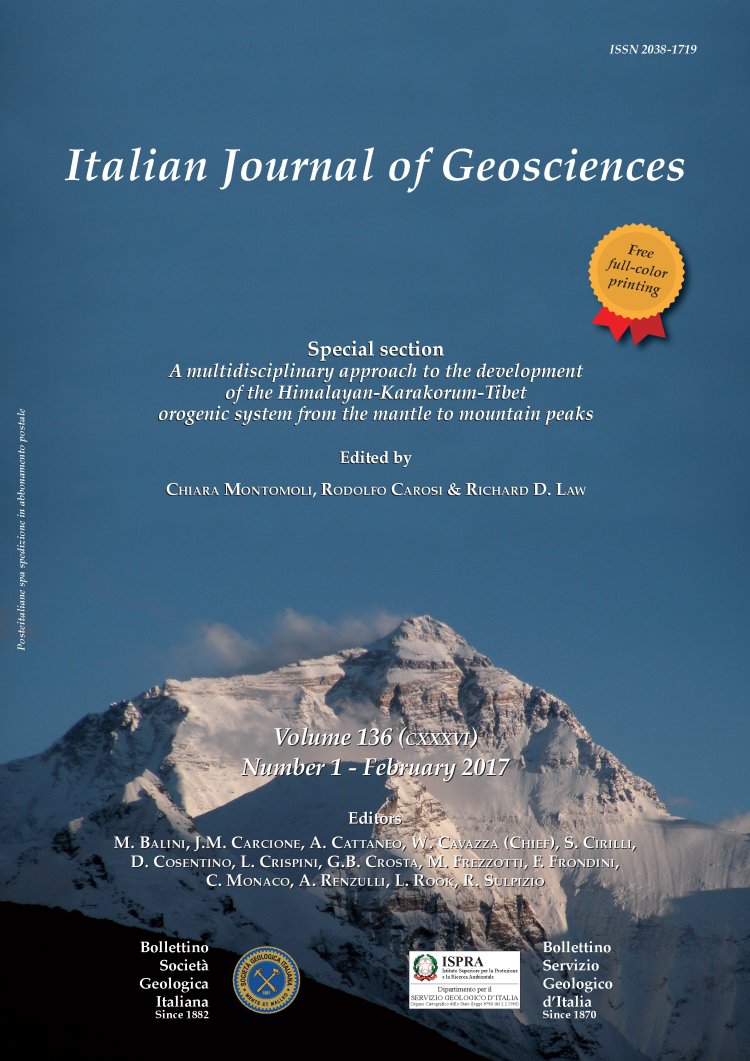
Protolith of the Stak eclogite in the northwestern Himalaya
Yui Kouketsu (*), Kéiko Hattori (**) & Stéphane Guillot (***)
(*) Geochemical Research Center, Graduate School of Science, The University of Tokyo, Tokyo 113-0033, Japan. Corresponding author e-mail: kouketsu.yui@nagoya-u.jp.
(**) Department of Earth Science, University of Ottawa, Ottawa, Ontario K1N 6N5, Canada.
(***) ISTerre, University Grenoble Alpes, CNRS, 1381 rue de la Piscine, 38400 Grenoble Cedex 09, France.
Volume: 136 (2017) f.1
Pages: 64-72
Abstract
This paper reports the major, minor and trace element abundances and Nd isotope compositions of bulk rock samples of eclogites from the Stak Valley in northwestern Himalaya and discusses their protolith. Major element compositions confirm the basaltic nature of the protolith. Trace element abundances normalized to the primitive mantle show almost flat patterns at ten times the primitive mantle values with slightly high concentrations of Th and light rare earth elements. These patterns are similar to those of enriched MORBs. Neodymium isotope compositions are chondritic and the values of εNd lie between those of MORB and old Indian continental crust. Immobile trace element contents of Stak eclogites are similar to those of the Permian Panjal Traps and significantly different from those of the Deccan Traps erupted at 73–66 Ma in the northwestern Indian plate, suggesting that the Panjal Traps is the protolith of the Stak eclogites. The protoliths of ultra-high pressure eclogites in the Kaghan and Tso Morari massifs in northwestern Himalaya are also interpreted to be the Panjal Traps. The results of this study suggest that a large Permian igneous province developed at the northwestern margin of the Indian plate before the collision with the Eurasian continent.
Keywords
Get Full Text